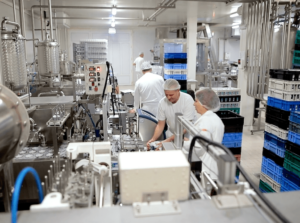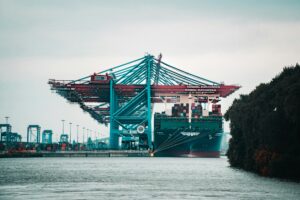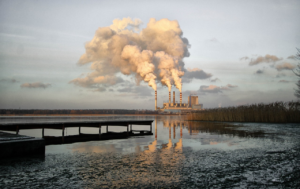On the third episode of “The Future of ESG Risk Management” SpheraNOW podcast series, Alex Studd, a product marketing manager at Sphera, is joined by Sphera Solution Engineer Andy Bartlett and Sphera Solution Executive Al Miraldi to discuss toolbox talks.
Listen to other episodes of “The Future of ESG Risk Management.“
The following transcript was edited for style, length and clarity.
Alex Studd:
Welcome to the SpheraNOW ESG podcast, a program focused on safety, sustainability and productivity topics. I’m Alex Studd, one of Sphera’s product marketers with a focus on operational risk management. Today’s episode of “The Future of ESG Risk Management” podcast is called “The Toolbox Talk.” I’m joined today by our usual speaker, Andy Bartlett. For anyone new to this podcast, Andy is a U.K.-based solution engineer with over 40 years of health, safety and environment (HSE) experience.
And today’s special guest is Al Miraldi, a Chicago-based solution executive with a deep understanding of process safety and risk management. She’s been with Sphera for nearly four years and specializes in risk assessments and hazard management. Thank you both for joining the podcast.
Al Miraldi:
Excited to be here, Alex.
Andy Bartlett:
It’s great to be here again, Alex, with a new partner.
Alex Studd:
Wonderful. So, let’s begin today’s episode with you, Andy. As I previously mentioned, today’s episode is called “The Toolbox Talk.” Explain to everyone what that is and why a toolbox talk is necessary before any work is ever performed.
Andy Bartlett:
Okay, Alex. According to worldwide statistics, every year, a huge number of workers are killed in workplace accidents which could have been prevented. Additionally, accidents that didn’t result in a fatality—ranging from a scratch to an amputation and everything in between—account for tens of thousands of reported accidents. A toolbox talk is just one method of accident prevention. When performing work in hazardous facilities, a permit to work is required.
This is not seen by all the crew performing the work. This means that communicating hazards and controls to the work crew is required. Shorter than the safety induction meeting, a toolbox talk has become an essential tool for workplace safety. Instead of in a conference room, these talks are most commonly held on the actual job site, right next to the job, right before the start of the work. Whether you want to call it a toolbox talk, a hardhat chat, a health and safety brief, a safety talk or a safety meeting, the discussion allows the work crew to give feedback and raise concerns which must be addressed and documented on the toolbox talk form.
All attendees sign a form to acknowledge their understanding before work is started. The pre-work checklist should be performed by the job supervisor. It consists of 12 to 20 questions, with three examples of the day’s tasks, the steps being discussed and agreed upon, the responsible individuals identified for each step and the affected work parties being contracted and briefed.
Alex Studd:
Very helpful. I appreciate the explanation. Now, Al, I noticed Andy specifically mentioned the work crew. What about the production staff? Do they also need a toolbox talk?
Al Miraldi:
Most facilities have a program that is used to communicate safety concerns to the production staff. Most facilities have three or four shifts. So, they need to run through it with each shift and document it for auditing purposes with anybody who’s missing due to medication or medical leave. Everybody is required to catch up on missed talks upon return. These sessions typically cover lessons learned from incidents in their own facility or other locations.
Alex Studd:
Good to know. Now, Andy, where does the toolbox talk fit into a company’s environmental, social and governance (ESG) and process safety programs?
Andy Bartlett:
Operational ESG includes the following mantras for companies: operate safely by letting everyone involved in the job know the risk and mitigation controls involved; operate efficiently by being able to discuss the whole job with all the workforce involved; encourage employees to do work the right way and give them the opportunity to ask questions; and operate sustainably by increasing productivity and being proactive in reducing incidents and accidents.
The U.S. Occupational Safety and Health Administration (OSHA) and the Center for Chemical Process Safety (CCPS) process safety programs have elements that discuss communication for safe work practices, workforce involvement, employee participation and the understanding of the hazards and risks involved in performing work. This can be achieved in the real world at the front line by holding a toolbox talk. This gets its name from the safety meeting that is held to discuss the work to be performed, including who does what and explaining the hazards and controls in place.
For many workers, it might be their first time at that particular site, or it might be their first time performing that assigned task. Elimination is a two-way street. The chance to ask questions and clarify expectations is essential. Involving the workforce is a must. These are people who frequently perform hazardous tasks and will have some suggestions on how to make that work safer.
Alex Studd:
Now, after the toolbox talk is done, Al, what should we be looking for?
Al Miraldi:
During the toolbox talk, you’ve got to stress that while performing the work, things might not go as planned and hazards might need to be reevaluated. You always have to encourage the team to identify potential or emerging problems related to the condition of the plant and the equipment, and then report equipment and plants that are in poor condition to the higher-ups. I would say good communication is probably the most essential thing for health and safety management on work sites.
It’s vitally important that contractors, managers and supervisors engage and consult with workers. It’s one of the most effective ways to identify hazards and control the risks. If you think about it, workers are more willing to participate effectively when they’re consulted, when they have confidence in their managers and supervisors, when they know their ideas and concerns will be listened to, and if required, acted upon. And if they have sufficient knowledge to recognize when something is not safe or could be harmful to their health, then they feel empowered to report it.
Alex Studd:
That makes sense. Thanks, Al. So, Andy, in your career, have you had personal experiences where a toolbox talk was not performed, and as a result an incident occurred?
Andy Bartlett:
I had to investigate an incident where two workers were badly burned. And one of the findings was that no toolbox talk had been performed. The workers went to the wrong location, opened a flange on a fuel gas line on a furnace and service. The released gas ignited and then burned both workers. This is an example of what we’ve been talking about. Miscommunication between workers, a lack of clear verbal instructions, no two-way instructions and no repeat back are all correctable by using a toolbox talk.
Alex Studd:
Wow, that’s a tragic story, but I appreciate you sharing that, Andy. Now, Al, what about you? Do you know of any incidents where poor toolbox talk practices were a contributing factor to something horrible or bad happening?
Al Miraldi:
There’s a Chemical Safety Board (CSB) report titled, “Key Lessons for Preventing Inadvertent Mixing During Chemical Unloading Operations.” In 2016, there was an incident in Atchinson, Kansas, at MGPI Processing Inc. Over 140 people sought medical attention and six people were hospitalized. Unfortunately, toolbox practices are mentioned as one of the areas in the failure.
Alex Studd:
That’s horrible. But thank you again for sharing that. So, Andy, let me ask you this. We’ve identified what toolbox talks are and the importance of them. How can technology help improve the process?
Andy Bartlett:
With technology available today, you can link the toolbox talk to the job safety analysis or risk assessment. This can be done on a mobile device that you can have in front of you when you’re talking to the workers. You know what the risk assessment looks like. This allows a focus on the hazards and controls identified in the risk assessment and the tasks that workers are about to start. Any additions or lessons learned added to the job pack will alert workers on the next instance of the job. Communication between the workers involved is key.
Alex Studd:
Communication is always key. Now that I have a full understanding of the subject matter, Al, I’m going to ask you a very direct question. Does OSHA require toolbox talks?
Al Miraldi:
There are no hard and fast rules about whether or not toolbox talks are required, particularly under OSHA. However, in 1926.21B—the standard for safety training and education—OSHA states, “Employer shall instruct each employee in the recognition and avoidance of unsafe conditions and the regulations applicable to his work environment to control or eliminate any hazards or other exposure to illness or injury.” If you go to the other side of the pond and look at hse.gov.uk, they don’t require them, but they do have a webpage with resources to help prepare toolbox talks. And the same thing goes in Australia.
Alex Studd:
Got it. Requirement or not, I think we can all agree on the importance of these toolbox talks. With that, Andy, do you have anything that you’d like to conclude with on the subject?
Andy Bartlett:
I’d just like to restate that toolbox talks are a very important communication tool in our safety toolbox. On some sites you’ll need an interpreter. I’ve worked on sites where there was no common language, and three interpreters were required. So, you need to make sure that the interpreters really understand the process as well.
Alex Studd:
That’s a really good point—you want to make sure nothing is lost in translation. Al, what about you? Any final thoughts?
Al Miraldi:
The connection between ESG and process safety management (PSM) has always existed, just under different names. We’ve always wanted to operate safely, efficiently and sustainably. The problem is, historically, it’s been difficult to do because the technology to support these initiatives didn’t exist at scale. By having a system that can aggregate those silos of data and then standardize them, we can help businesses mitigate risk proactively and achieve their goals.
And equally important—this performance can be reported in an auditable and trackable way for corporate executives to effectively manage or measure performance improvements over time. This is something that’s being consistently asked for across the board now.
Alex Studd:
Thank you, Andy and Al. This has been tremendously helpful. I greatly appreciate your insights on this important subject matter.






